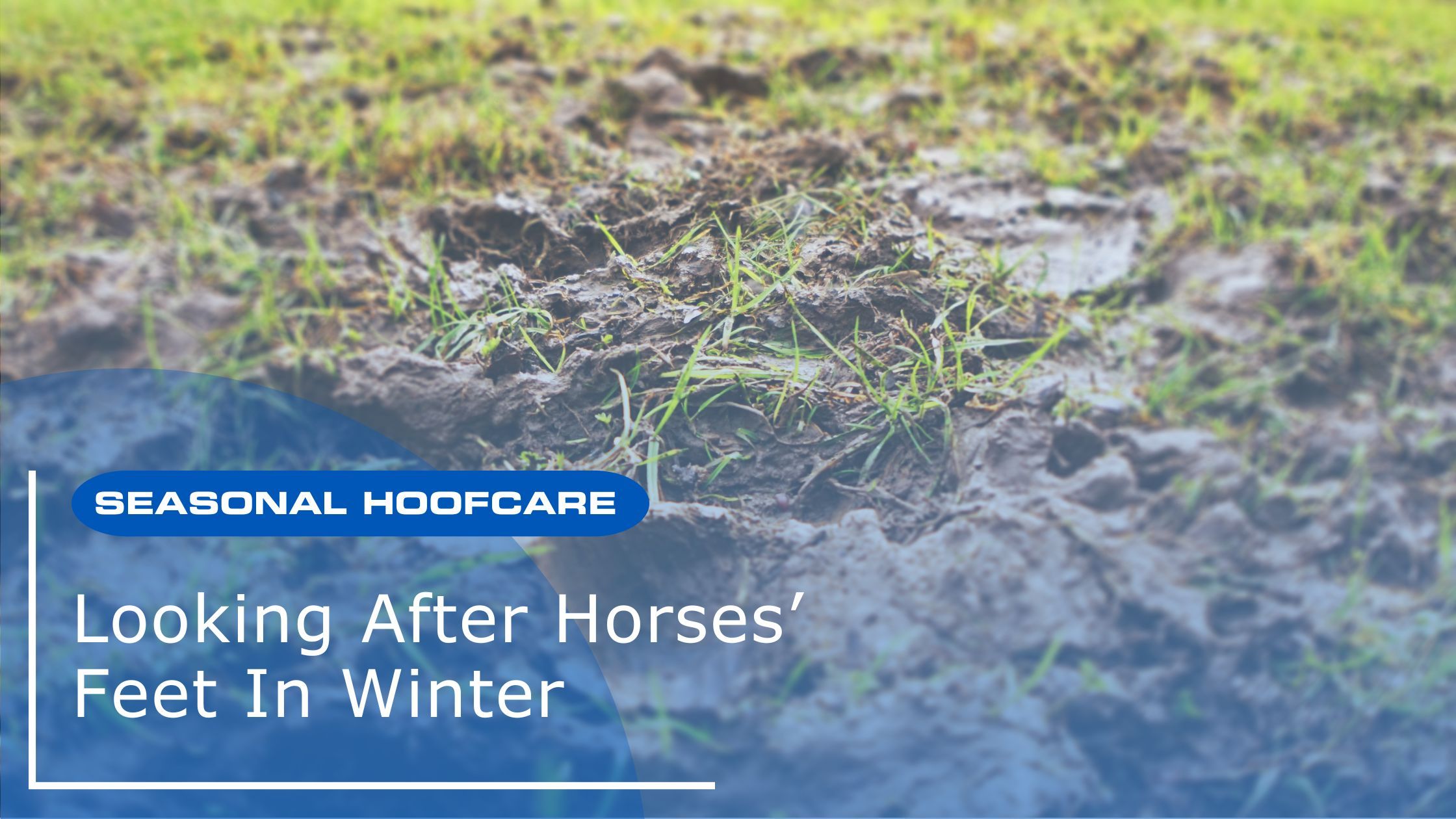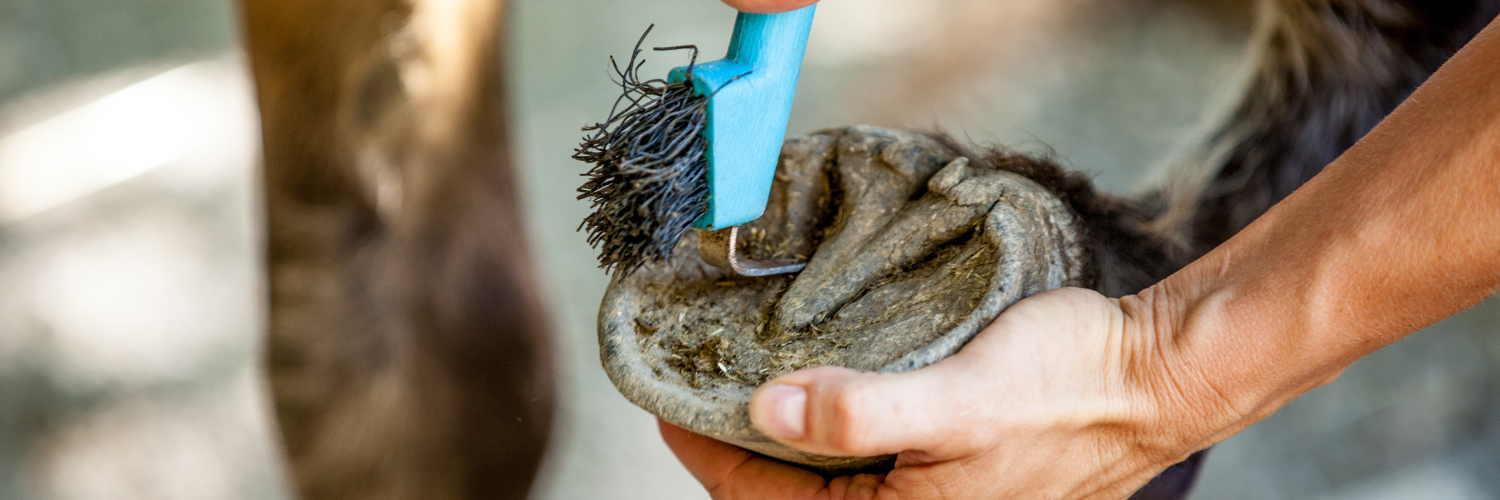Looking After Horses’ Feet In Winter
Looking after horses’ feet in Winter requires a little extra preparation in comparison to the warmer seasons. Just like how our bodies require tailored care at different times of the year, our horses do as well.
Winter brings cold and wet conditions, which can lead to hooves becoming too soft, developing issues such as thrush, or presenting with other concerns caused by the climate. These problems can be highly detrimental to the horse’s health, so it’s important that steps are taken to minimise the chances of them arising.
In this blog we’ll look at how to maintain hoof health throughout the Winter, with the assistance of your farrier and / or your veterinarian if required.
Regular Cleaning and Hoof Maintenance
Cold, wet weather means mud and softer soil, and this can pose a problem for your horse if it builds up in their hoof. To prevent this, clean your horse's hooves daily to remove mud, debris, and moisture. This can be done by using a hoof pick to gently remove any dirt or stones that have become lodged in the hooves.
Pay close attention to the frog (the triangular structure in the center of the hoof’s anatomy) and the hoof wall and seek assistance from your farrier or veterinarian if anything doesn’t look quite right.
The Gold Standard In Looking After Horses’ Feet In Winter
The best thing you can do for your horse during Winter is ensure that their hooves are regularly seen to by a professional farrier. This generally involves having the hooves properly trimmed and balanced, with shoes fitted if required.
Not only does this help promote overall hoof health, but it also assists in maintaining the optimal shape of your horse’s hooves. Additionally, this means you’ll be far less likely to end up dealing with serious issues, as your farrier will pick up on and be able to address them at an early stage.
DIY Hoof Trimming
If you are in a remote location without easy access to a farrier, it is wise to take a more hands on approach in the care of your horse’s feet. In this instance, regular trims can be done on a DIY basis with a quality rasp, and careful handling.
Heller has a range of rasps that are suitable for wet conditions, and selecting the right rasp is simple once you know what you need to consider. The Heller Excel Original, for example, is well suited for softer, damper horn structures. Rasps with smaller teeth configurations can easily become clogged when used in wet weather, but the larger setting in the Excel Original allows pieces of soft and / or wet hoof to easily fall out. It is suitable for many horses and particularly those that spend a lot of time outside where the hooves accumulate sand and mud that can have a negative impact on the wear process of rasps.
We also have an article full of horse shoeing and hoof trimming tips which will give you insight into how farriers manage hoofcare, so you can better create your own plan.
Monitoring For Hoof Conditions
While regular farrier visits will mitigate the risk of hoof conditions worsening, the length of your trimming cycle could mean that they may still develop between visits. Additionally, if you do not receive regular care from a farrier, it is vital that you regularly inspect your horse’s hooves for any signs that something isn’t right.
Look for changes in hoof texture, foul odour, discharge, or lameness. If you notice any abnormalities, contact your veterinarian or farrier for a thorough evaluation.
Common hoof conditions such as thrush and seedy toe thrive in wet and damp environments and can cause significant discomfort for your horse. Thrush typically occurs in the grooves and crevices of the frog (the triangular-shaped structure in the center of the hoof), while seedy toe makes itself at home in the inner wall of the horse’s hoof. Early detection and prompt treatment are essential in managing these conditions effectively, and your horse may not always show obvious symptoms, so be sure to look over their hooves regularly.
Treating Common Hoof Conditions
When caught early enough, many common hoof conditions can be effectively managed and treated with the topical application of an appropriate treatment. Suitable products for the treatment of thrush and seedy toe include Comfortmix Thrush Treatment and Hoof Hygiene Liquid.
Hoof Hygiene Liquid is a natural based treatment. Its main ingredients are chelated minerals, aloe vera and isopropanol, and it is suited to a range of applications, including preventative maintenance. Comfortmix Thrush Treatment is a more specialised product and is designed to fight thrush, white line disease and other conditions caused by both aerobic and anaerobic bacteria.
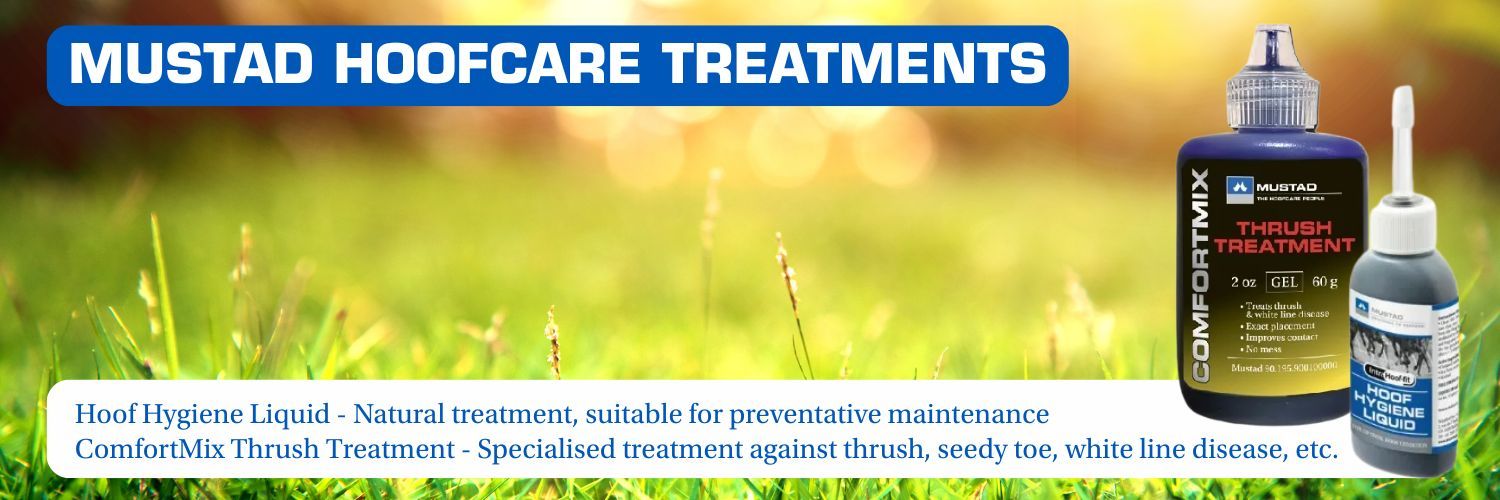
Applying Hoof Protection
Another key factor in looking after horses’ feet in Winter is recognising when they may require additional protection from the elements. Wet conditions are tough on hooves, so if your horse’s paddock or stall is often moist, it is wise to apply hoof oil or other hoof dressings which can create a barrier that helps to repel moisture and prevent excessive softening of the hooves.
You could also use hoof boots such as Delta Hoof Boots (don’t forget to measure your horse’s hooves) or specialised hoof pads to further protect the hooves.
Nutritional Considerations For Looking After Horses’ Feet In Winter
Unsurprisingly, your horse’s diet can have a pretty significant impact on the health of his or her hooves. Ensuring that they receive a balanced diet with proper nutrition is key all year, but particularly important in Winter, as this will promote strong hooves and overall hoof health.
Supplementing For Hoof Health
Supplementing their diet is a great way of looking after your horse’s overall wellbeing. A balanced and varied diet is ideal, but even horses that have the best diet can benefit from the introduction of a hoof supplement.
We at Mustad Australia believe that Right Balance Hoof Supplement is one of the best hoof supplements on the market today and suggest it’s inclusion for the number of benefits it provides. Right Balance not only offers biotin to promote healthier hooves, but it also contains Zinpro (zinc) that assists in quicker absorption of the biotin into the blood stream which helps to enhance outcomes.
The feedback we get from users is that you will notice dapples on your horse’s coat at around weeks four to six, followed by a better quality hoof growth that your horse and your farrier will appreciate. Full results are often seen around the six to eight week mark of feeding your horse the recommended dose each day, so you will need to be patient in terms of discovering the full impact of this product.
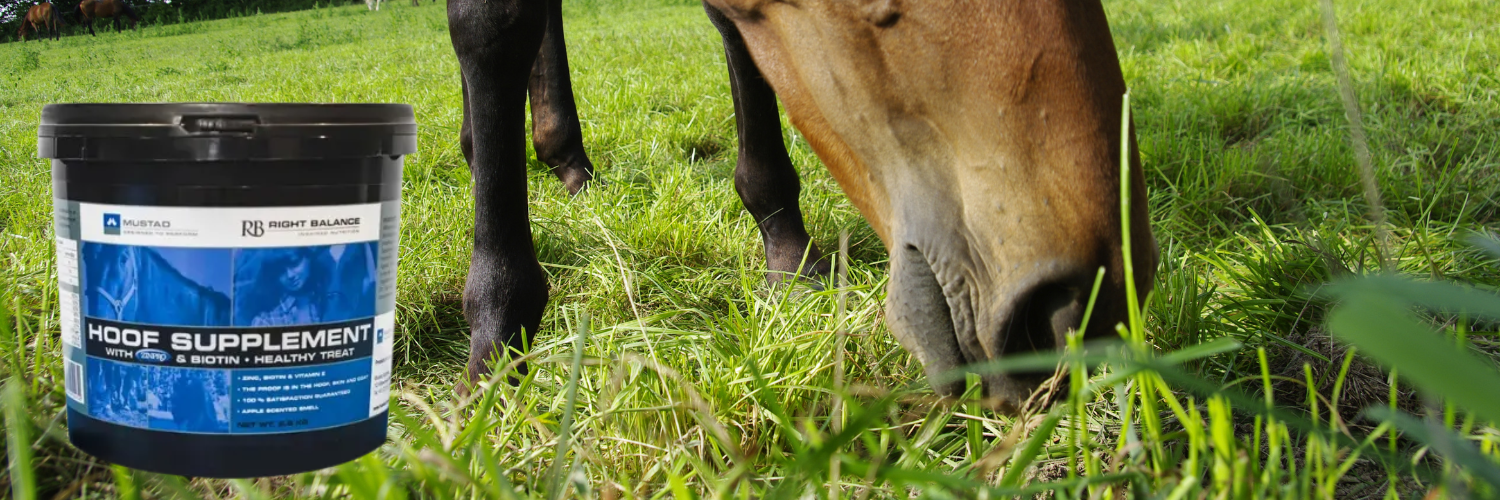
Providing Dry Shelter and Adequate Bedding
Another key factor in looking after your horse’s hooves in Winter is providing them with a place to get comfortable and stay dry. This allows them to rest and avoid prolonged exposure to wet and muddy conditions, therefore reducing the risk of hoof issues.
Ideally horses will have access to a dry, enclosed area where they can escape the elements, but at the very least, your horse will need a well-drained space to hang out in so that their hooves are not constantly in mud or water.
Additionally, if your horse is stabled, ensure the stall has adequate bedding. Using materials like straw, shavings, or specialized hoof-friendly bedding helps absorb moisture and provides a drier environment for the hooves.
Regular Exercise
Exercise may not seem like the most important element of hoofcare, but keeping your horse active can do wonders for their general health, as well as the structure of their hoof. Not only does exercise promote blood circulation in the hooves, but regular turnout or exercise on dry ground can be particularly beneficial in cold and wet weather, as movement helps dry out the hooves and prevents them from becoming excessively soft.
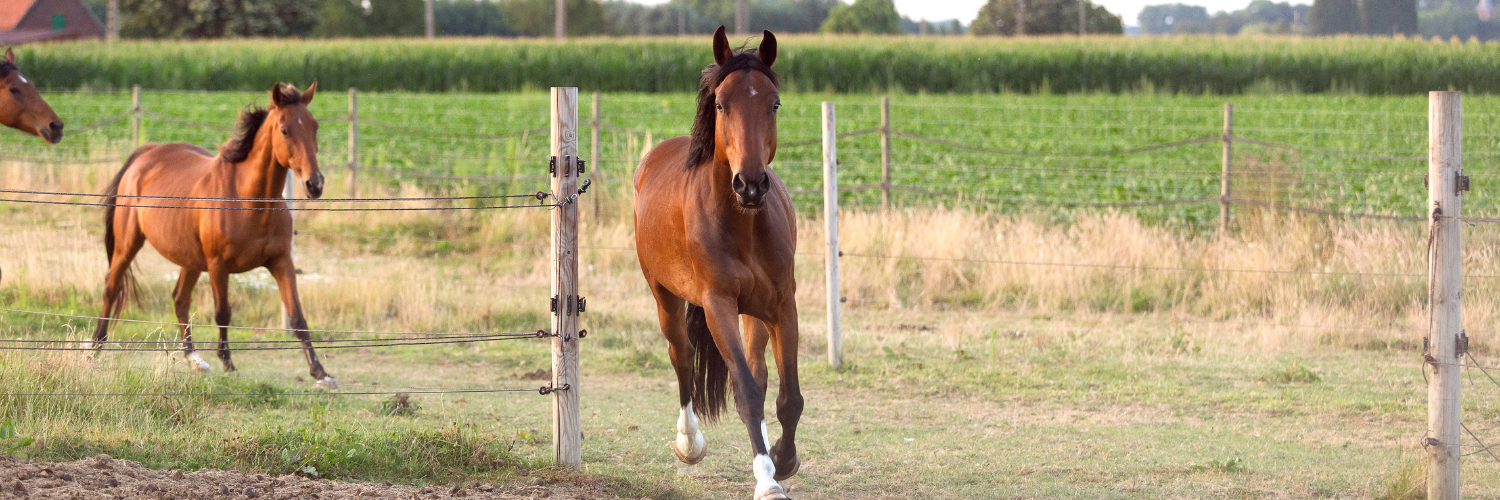
In conclusion, remember, every horse is unique, and their hoofcare needs may vary. It's essential to work closely with a knowledgeable farrier and veterinarian to develop a hoofcare routine that suits your horse's specific requirements and addresses any individual concerns.
Mustad Australia has a wide range of hoofcare products to maintain hoof health during the winter months. Visit your nearest Mustad dealer or www.mustad.com.au to learn more.

